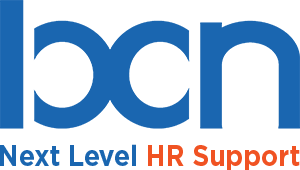“Venti Chai Latte with two shots of espresso please.” That is one of my favorite drinks at Starbucks, or maybe an extra strong Americano with cream. On a recent visit, I saw the notice that Starbucks was closing all 8,000 stores on the afternoon of May 29 for unconscious bias education. This stemmed from a recent incident at a Philadelphia Starbucks in which a store manager called police as two black men visited the store and did not place an order, saying that they were waiting to meet with a colleague. Due to the manager’s action, the men were arrested and charged with trespassing. This raises the question of what is racial-bias and racial discrimination and what employers need to know about it.
Starbucks CEO Kevin Johnson has acknowledged the company’s fault, apologizing to the two men and the community and vowing to train and enlighten their employees as well as make such training part of the onboarding process for new partners.
What is racism and what are the signs?
In its most basic definition, racism is discrimination and negative stereotyping based on race or skin color. Racial discrimination occurs when an employee is discriminated against based on race or national heritage. While it is sometimes obvious and easy to spot, it is more often subtle and difficult to detect. Examples of blatant racial discrimination include the use of racial slurs, slurs masked as jokes or noticeable advancement issues. Signs also include strategic and obvious assignment of work duties, belittling and condescending conversation and other forms of unfair treatment. Federal laws prohibit this behavior. Racial discrimination in the workplace is strictly prohibited by many federal and state laws. Primary federal laws prohibiting racial discrimination fall under Title VII of the Civil Rights Act of 1964 which says employers cannot:
- Fail/refuse to hire an employee based on race
- Fire or discipline an employee based on race
- Pay an employee less or provide fewer benefits based on race
- Fail to provide promotions or opportunities to an employee based on race
- Improperly classify or segregate employees or applicants based on race.
According to the federal Equal Employment Opportunity Commission (EEOC), which enforces Title VII, race discrimination is the most common type of reported workplace discrimination. In recent years, companies have had to pay upwards of millions of dollars to compensate victims of race discrimination.
Sometimes racial discrimination is subtle
Another form of racial discrimination is called micro-aggression, which refers to more subtle forms of racial bias such as petty slights or obstacles that can cause serious emotional harm over time or affect people in a variety of ways. Examples include:
- Comments about a person’s race, including ones that are positive on the surface about the employee but belittle the person’s race (“You’re well-spoken for an Asian man”)
- Jokes about a person’s race or about the race of an employee’s spouse or children
- Unusual scrutiny given the actions of an employee of one race as opposed to others
- Dress codes that are designed to prevent “ethnic” looks by controlling someone’s hair and clothing in a way that’s not necessary for the job.
Recognize the signs and take action
How can an employer recognize racial discrimination and combat racism? What sort of steps should an employee take if they have been a victim or have witnessed it?
In order to report racial discrimination, you first have to be able to recognize it. Here are some of the more obvious signs of disparate treatment and racial discrimination:
- Assigning an employee job duties below their qualifications and job title, such as fetching coffee or filing
- Consistently promoting employees of one race over another
- Giving higher performance reviews to employees of one race over another
- Not hiring a qualified candidate because he or she “wouldn’t fit in” due to race
- Assigning employees of one race dangerous job tasks while giving safer, easier jobs to employees of another race.
If you believe you have been the victim of racial discrimination at work, there are steps to combat it and prevent it from continuing. Speak with your manager and/or the Human Resources Office immediately to report it – whether it is something you experienced or witnessed. Human Resources can protect both the affected employees and the company.
Take detailed notes of the occurrence, consult the employee handbook, and notify your business leaders of what’s going on so they can take reasonable steps to prevent it from continuing. Once the complaint is filed, the company is required to confront the issue and stop the behavior. If appropriate action is not taken, it can also be reported to the EEOC.
Although it may be difficult to identify racial bias or microaggressions, employers must address the issue and put a stop to the behavior. If you are a leader within your organization, listen to employees when they speak up about such situations. The first and best way to combat racial discrimination is to be willing to listen, empathize and learn. You can also follow the Starbucks example and ensure that your employees are well educated on what racial discrimination is and how to combat such actions and prevent them from happening.

